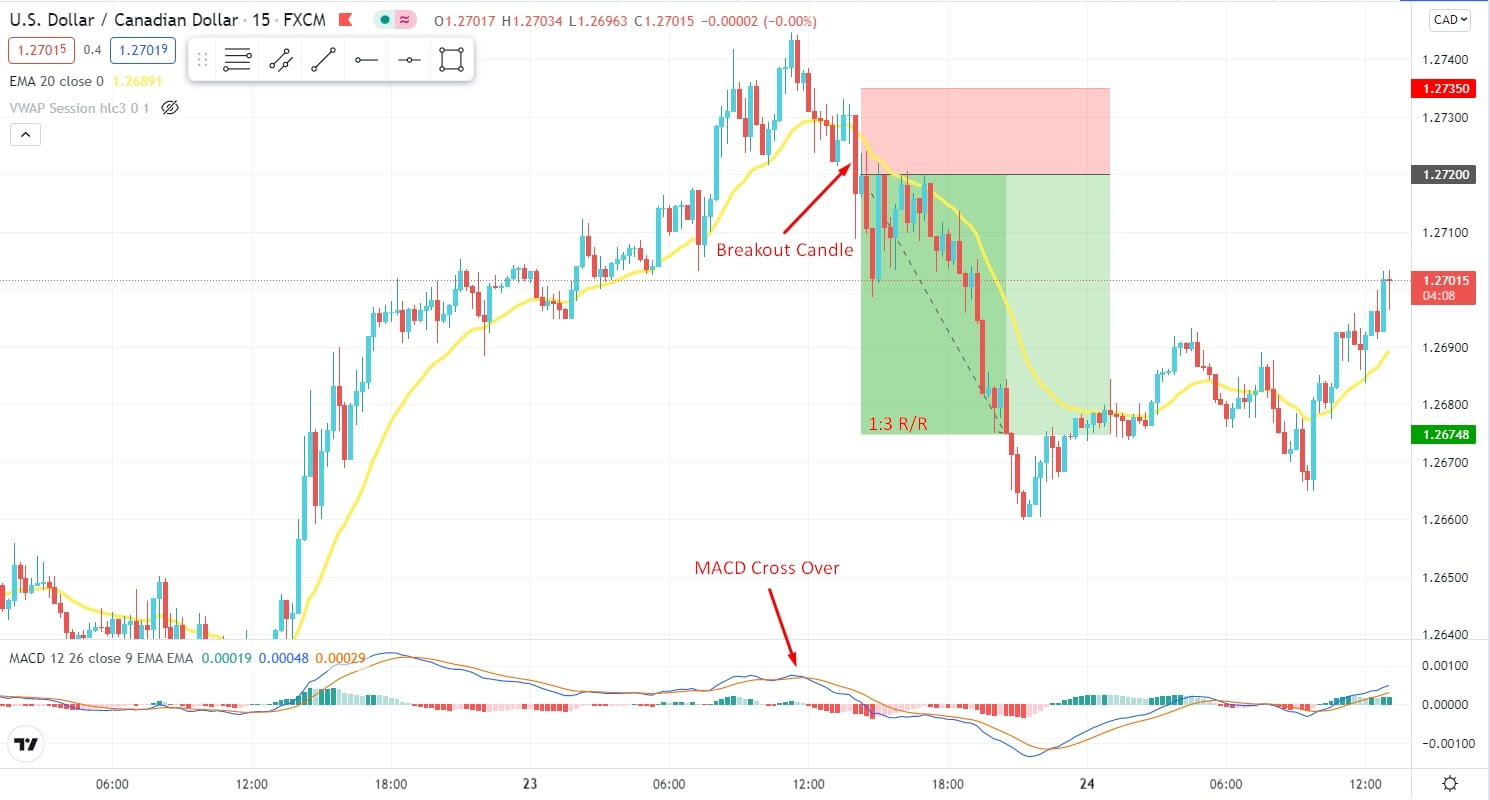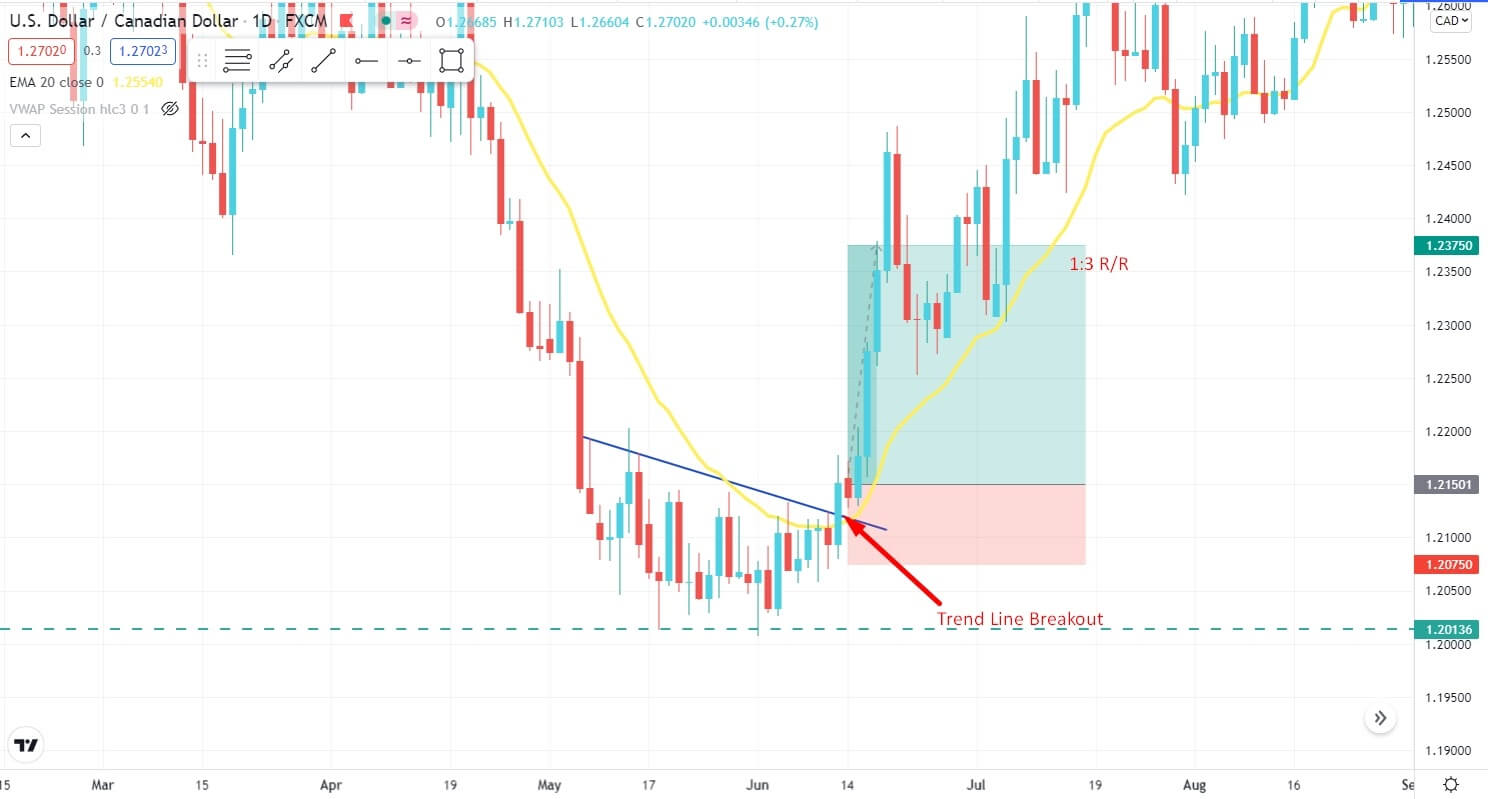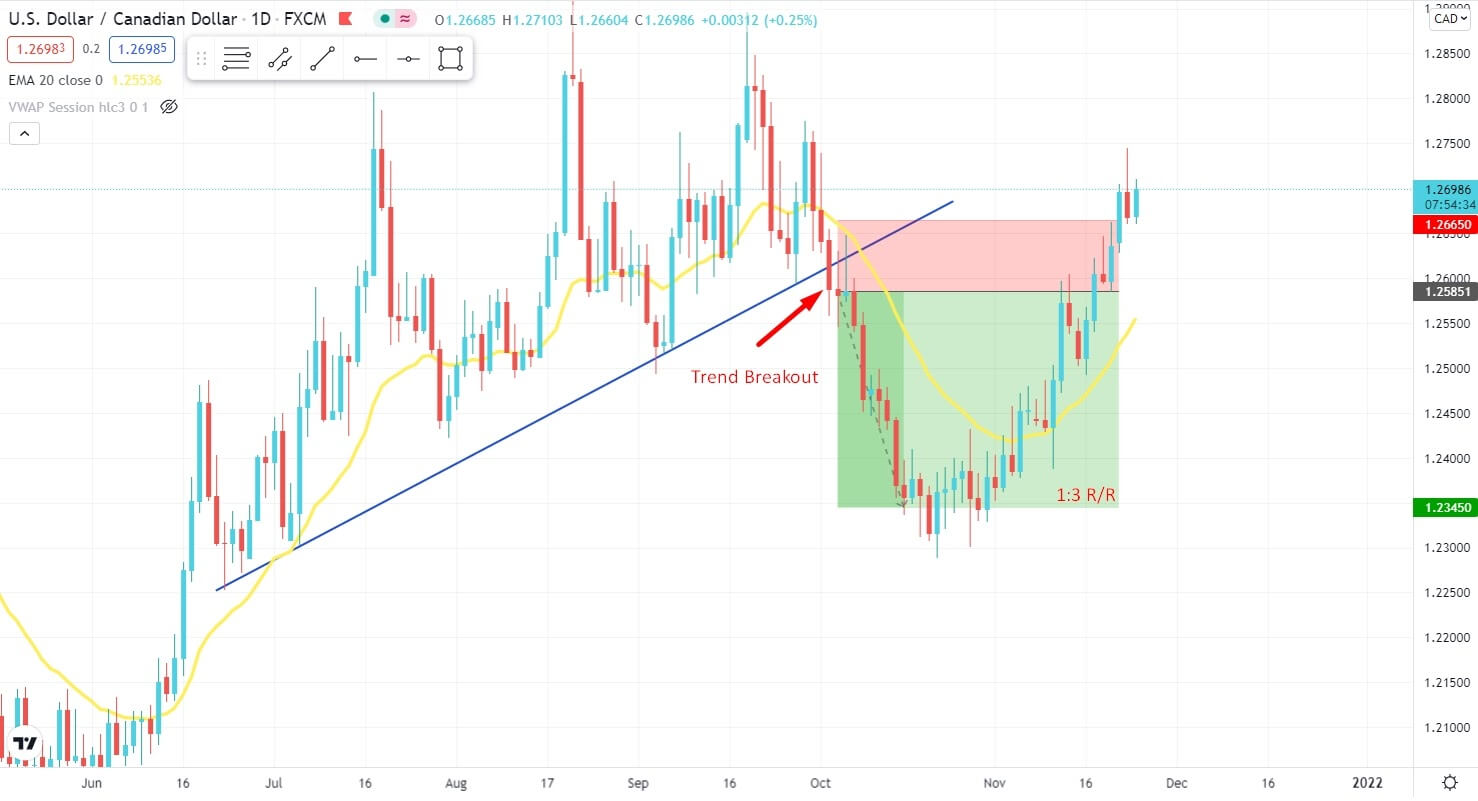Maximum traders utilize take-profit (T/P) orders as a combination with stop-loss orders (SL) while managing their open positions. At the same time, the asset hits the take-profit price level and accomplishes the take-profit. Afterward, the position automatically closes for a profit. Also, if the asset drops to the SL level, the order activates and closes the position on a loss.
Applying the T/P order gives excellent convenience to the traders. Market participants can trade with ease as they do not need to be concerned about manual execution. Then again, T/P orders are activated at the ideal price no matter the fundamental security’s conduct. The stock could begin to breakout higher, yet the take-profit order may execute at the earliest reference point of the breakout, bringing about significant opportunity costs.
Apart from this, short-term traders can make the best use of the T/P order as part of their risk management. They’ll be able to instantly exit the position after hitting the targeted profit without risk of the potential future market downturn. But the long-term traders don’t incline toward such orders since it cuts into their gains.
What is take profit order?
A trader places a T/P order on a certain level to maximize their profits. It determines a specific price over the buying price or below the selling price, which the trader selects. If the price reaches that profit level, it will automatically book the profit. However, the profit order will not act if the price does not reach that target level.
Moreover, a take-profit order is used by both long-term and short-term traders. However, it is most valuable for intraday traders who wish to take advantage of an impulsive move in the price of an asset to make a rapid gain.
For instance, a trader goes for a buy entry on the 1.1240 price level, anticipating the price will go higher. Therefore the trader a take profit order above the entry price, say 1.1290 price level. So, if the bid price touches the predefined level, which is 1.1290, the position will close automatically, and the profits are secured.

Entry, stop loss, and take profit levels
How to use take profit order in trading strategy?
Traders develop a sell-price for selling the asset to utilize the T/P order. It is more than the price at which the asset was bought. It assures the profit traders will make in sales. The order is executed as soon as the price hits the T/P level and the sale runs by the recent market price. In case the price does not meet the level T/P order and sale won’t be activated. In that case, the trader will hold on to the asset.
Since take-profit order limits the risk and closes the trade instantly after hitting a certain price level, it can be an excellent tool for a risk management strategy. Take-profit order is a programmed closing strategy dependent on a profit-loss estimation rather than an enthusiastic choice of hold or sell. Hence, a technical analysis of the asset price and potential market moves will be required for placing the take-profit order.
A short-term trading strategy
Short-term trading is prevalent among both retail and institutional traders. It allows you to make a quick profit in a short period. Short-term trading can be exceptionally worthwhile; however, it can likewise be risky.
Bullish trade setup
Short-term trading can keep going for as little as a couple of moments to up to a few days. Before you jump into short-term trading strategies, first, you have to understand the R/R (risk/reward) of each trade. You should not just skill to spot great short-term trading opportunities but also how to secure your capital from bad ones.

Bullish short-term strategy
Best time frames to use
There are many time frames you can choose from, but the hourly time frame is the most reliable for short-term trading. However, the time frame may vary from five minutes to 1-hour, depending on your trading strategy. Whatever time period you decide to trade, it should normally accommodate your character. Below we provided a short-term trading strategy based on a 1-hour time frame.
Entry
Look for the price closes above the dynamic level of 20 EMA. Also, the MACD lines reside below the 0.00 level, and the blue line crosses over the red line. Open a buy entry when the price retraces around 50% of the current H1 breakout candle.
Stop loss
Stop loss should be below the breakout candle with 3-4 pips buffer.
Take profit
Take profit level should be placed based on 1:3 Risk/Reward ratio minimum.
Bearish trade setup

Bearish short-term strategy
Entry
Look for the price close below the dynamic level of 20 EMA. Also, the MACD lines reside above the 0.00 level, and the blue line crosses below the red line. Open a sell entry when the price retraces around 50% of the recent H1 breakout candle.
Stop loss
Stop loss should be above the breakout candle with 3-4 pips buffer.
Take profit
Take profit level should be placed based on 1:3 Risk/Reward ratio minimum.
A long-term trading strategy
It is also famous for position trading that permits traders to hold a trade for an extended period. Long-term trades can be held for months or years. Such traders avoid short-term price movements and like to depend on more detailed fundamental analysis and long-term trends.
Best time frames to use
Long-term market participants usually prefer to trade based on the daily and weekly time frames. The weekly charts will build up a longer-term viewpoint and help put entries in the shorter term daily. Trades generally range from several weeks to many months, at times years.
Bullish trade setup

Bullish long-term strategy
Entry
The price should break over the downtrend line and the dynamic level of 20 EMA with a daily bullish candle. Enter a buy trade on the next candle.
Stop loss
Stop loss should be below the breakout candle with a 10-15 pips buffer.
Take profit
Take profit level should be placed based on 1:3 Risk/Reward ratio minimum.
Bearish trade setup

Bearish long-term strategy
Entry
The price should break below the uptrend line and the dynamic level of 20 EMA with a daily bearish candle. Enter a sell trade on the next candle.
Stop loss
Stop loss should be above the breakout candle with a 10-15 pips buffer.
Take profit
Take profit level should be placed based on 1:3 Risk/Reward ratio minimum.
Pros and cons
| 👍 Pros | 👎 Cons |
|
|
|
|
|
|
Final thoughts
In a nutshell, take-profit order might support traders with the short-term trading method since it offers to exit instantly after reaching the targeted profit. Typically, a tremendous take-profit order is the better strategy for short-term traders.
The trader who does not place the take-profit order may end up slipping away the profit due to not understanding when to close the trade. Therefore, any short-term trader without take-profit order is like a warrior without his shield.














Comments